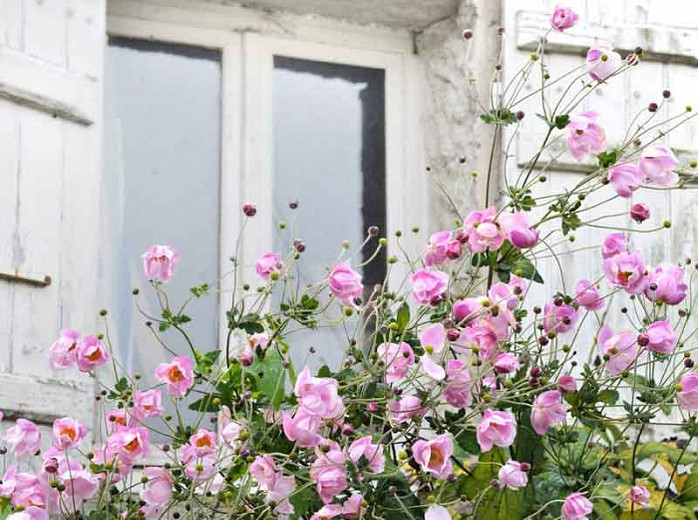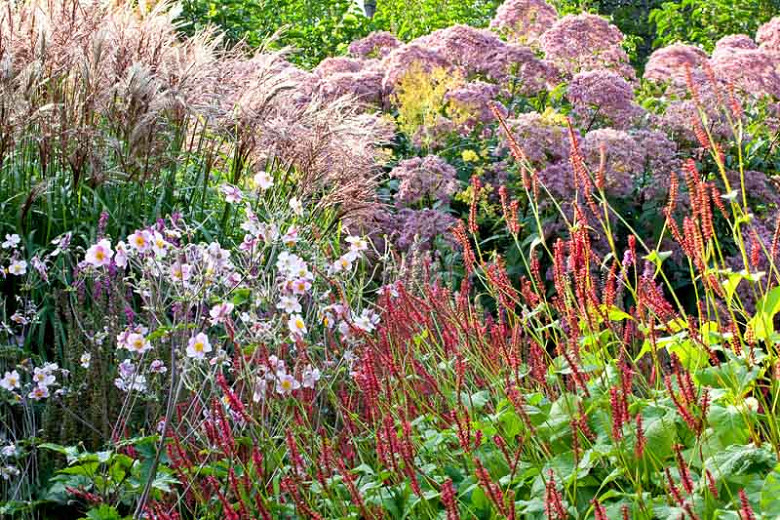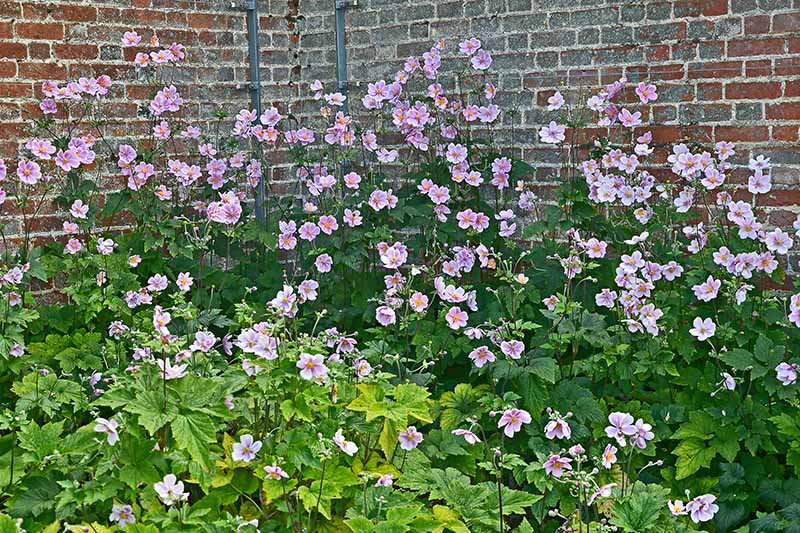The Best Companion Plants For Japanese Anemones To
The Best Companion Plants for Japanese Anemones
Japanese anemones are beautiful flowers that add a touch of elegance to any garden. They come in a variety of colors, including white, pink, purple, and red. Japanese anemones bloom in the fall, which makes them a great way to add some color to your garden as the weather cools down.
One of the best things about Japanese anemones is that they are relatively easy to care for. They prefer well-drained soil and partial shade. If you give them the right conditions, they will thrive and bloom for many years to come.
One way to make your Japanese anemones even more beautiful is to plant them with companion plants. Companion plants are plants that complement each other and help to create a more balanced and attractive garden.
Here are some of the best companion plants for Japanese anemones:
- Tulips and daffodils: These spring bulbs bloom early in the season, before the Japanese anemones. They will provide a splash of color to your garden while the Japanese anemones are still dormant.

- Bleeding heart: This delicate perennial has ferny foliage and pink or white flowers that bloom in the spring. It is a great companion for Japanese anemones because it has similar growing requirements.

- Asters: These fall-blooming flowers come in a variety of colors, including purple, pink, and white. They will provide a long season of color after the Japanese anemones have finished blooming.

- Goldenrod: This tall, yellow-flowered perennial is a great way to add some height and contrast to your garden. It is also a good choice for attracting pollinators.

- Joe-Pye weed: This tall, blue-flowered perennial is another good choice for attracting pollinators. It is also drought-tolerant, so it is a good choice for gardens that do not get a lot of rain.

- Coneflower: This native perennial comes in a variety of colors, including purple, pink, and white. It is a great choice for attracting butterflies and other pollinators.

- Sedums: These succulent perennials come in a variety of colors, including green, pink, and purple. They are drought-tolerant and low-maintenance, so they are a good choice for busy gardeners.

When choosing companion plants for Japanese anemones, it is important to consider the following factors:
- Plant height: Japanese anemones can grow up to 3 feet tall, so you will need to choose companion plants that are of a similar height.
- Plant color: Japanese anemones come in a variety of colors, so you can choose companion plants that complement their color or create a contrasting effect.
- Plant bloom time: Japanese anemones bloom in the fall, so you will need to choose companion plants that bloom at the same time or that bloom before or after the Japanese anemones.
- Plant care requirements: Japanese anemones prefer well-drained soil and partial shade. You will need to choose companion plants that have similar growing requirements.
By following these tips, you can choose the best companion plants for your Japanese anemones and create a beautiful and balanced garden.
Japanese anemones are beautiful flowers that can add a touch of elegance to any garden. But what if you want to make your Japanese anemones even more stunning? By planting them with the right companion plants, you can create a truly eye-catching display.
There are many different companion plants that can be paired with Japanese anemones. Some popular options include:
- Flowering bulbs: Tulips, daffodils, and lilies of the valley all bloom early in the spring, so they can help to fill out your garden before your Japanese anemones come into flower.
- Perennials: Asters, coneflowers, and goldenrod all bloom in the fall, so they can provide a colorful backdrop for your Japanese anemones.
- Ferns: Ferns add a touch of gracefulness to any garden, and they can also help to provide shade for your Japanese anemones.
If you're looking for more inspiration, I recommend visiting Gardenia Inspiration. This website has a comprehensive list of companion plants for Japanese anemones, as well as other helpful information about growing and caring for these beautiful flowers.
FAQ of japanese anemone companion plants
1. What are good companion plants for Japanese anemones?
Japanese anemones are versatile plants that can be paired with a variety of other plants. Some good companion plants include:
- Hostas: Hostas provide shade and moisture, which Japanese anemones appreciate. They also have similar foliage colors, so they can create a harmonious look in the garden.
- Daylilies: Daylilies bloom at the same time as Japanese anemones, so they can extend the flowering season in the garden. They also have different flower shapes and colors, which can add visual interest.
- Ferns: Ferns add a touch of elegance to the garden, and they can also help to suppress weeds. They are also tolerant of shade, which is ideal for Japanese anemones.
- Sedum: Sedum is a drought-tolerant plant that can add color to the garden in late summer and fall. It is also a good choice for pollinators, which will appreciate the nectar from its flowers.
- Hellebores: Hellebores bloom early in the spring, before Japanese anemones. They can provide a splash of color in the garden when there is not much else in bloom.
2. What are the benefits of companion planting with Japanese anemones?
There are several benefits to companion planting with Japanese anemones. These include:
- Increased biodiversity: Companion planting can help to attract pollinators and other beneficial insects to the garden. This can help to improve pollination and pest control.
- Improved plant health: Companion plants can help to suppress weeds and pests, which can reduce the need for herbicides and pesticides. They can also provide shade and moisture, which can help to improve plant health.
- Extended flowering season: Companion plants can bloom at different times of the year, which can extend the flowering season in the garden. This can provide color and interest in the garden throughout the year.
- Aesthetic appeal: Companion plants can be chosen to complement the foliage and flowers of Japanese anemones. This can create a more visually appealing garden.
3. What are some mistakes to avoid when companion planting with Japanese anemones?
When companion planting with Japanese anemones, it is important to avoid the following mistakes:
- Planting incompatible plants: Some plants can compete with Japanese anemones for water, nutrients, or sunlight. It is important to choose companion plants that will not compete with Japanese anemones.
- Planting too close together: Japanese anemones need space to grow. It is important to plant them far enough apart so that they have room to spread.
- Not considering the light requirements: Japanese anemones can tolerate partial shade or full sun. However, it is important to choose companion plants that have the same light requirements.
4. How do I care for Japanese anemone companion plants?
The care requirements for Japanese anemone companion plants vary depending on the specific plant. However, some general tips for caring for these plants include:
- Water regularly, especially during hot, dry weather.
- Fertilize once a year in spring with a balanced fertilizer.
- Deadhead spent flowers to encourage more blooms.
- Protect from pests and diseases.
5. Where can I find more information about Japanese anemone companion plants?
There are many resources available to learn more about Japanese anemone companion plants. Some good sources of information include:
- Books: There are several books available that discuss companion planting with Japanese anemones. Some good examples include "The Gardener's Companion" by Barbara Damrosch and "The New Sunset Western Garden Book" by Sunset editors.
- Websites: There are many websites that offer information about Japanese anemone companion plants. Some good examples include the websites of the American Horticultural Society, the National Gardening Association, and the Royal Horticultural Society.
- Garden centers: Garden centers often have knowledgeable staff who can help you choose the right companion plants for your Japanese anemones.
Image of japanese anemone companion plants
- Tulips: Tulips are a great companion plant for Japanese anemones because they bloom at the same time. The bright colors of the tulips will complement the delicate flowers of the Japanese anemones.

- Daffodils: Daffodils are another early-blooming flower that can be planted with Japanese anemones. They come in a variety of colors, so you can choose ones that will match the color of your Japanese anemones.

- Bleeding heart: Bleeding heart is a perennial plant with delicate, heart-shaped flowers. It blooms in the spring, so it will provide color before the Japanese anemones start to bloom.

- Hostas: Hostas are shade-loving plants that can add some height and structure to a garden bed. They come in a variety of colors, so you can choose ones that will complement the color of your Japanese anemones.

- Ferns: Ferns are another great option for shade-loving gardens. They add a touch of elegance and can help to soften the edges of a garden bed.

Post a Comment for "The Best Companion Plants For Japanese Anemones To"